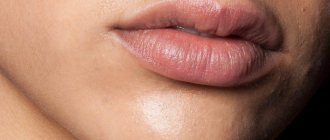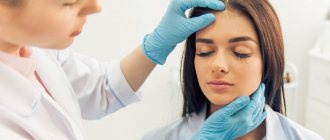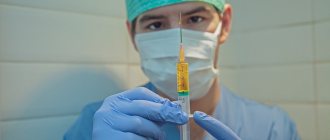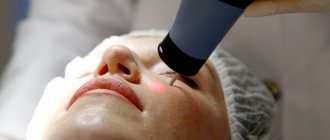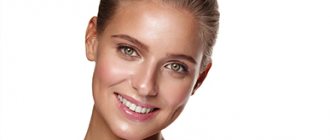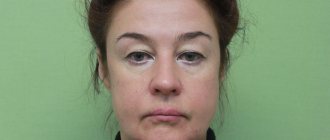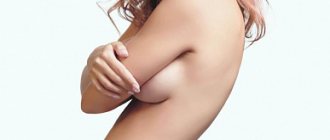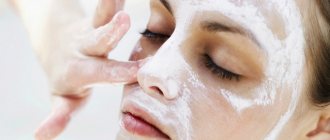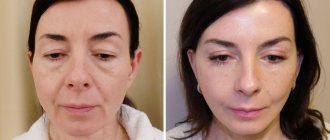A relatively new procedure aimed at correcting the volume and contours of the face, as well as improving skin quality, increasing elasticity, eliminating wrinkles and harmonizing the overall appearance by introducing the patient’s own fat. Today, this procedure is gaining great popularity due to its effectiveness and complete safety for the patient. Facial lipofilling using a person’s own fat cells successfully replaces contouring with fillers when correcting age-related changes, acquired or congenital cosmetic defects.
The essence of the technique: what is facial lipofilling?
Fat grafting is the opposite process of liposuction, or the removal of excess fat. In this case, lipofilling technology is aimed at replenishing the missing volume of soft tissue. The technique using one’s own fat is attractive due to the combination of such important factors for the patient as efficiency, comfort, safety, absence of allergic reactions and discomfort, rapid tissue restoration and engraftment, and lifelong results.
Since your own adipose tissue is used, which is taken from other areas of the body through the gentle water-jet liposuction procedure on the Body Jet device, for example, from the abdomen, hips, knees, there is practically no risk of rejection - the biomaterial (autologous fat) ideally takes root in the new area, so the procedure is absolutely safe.
The essence of the lipofilling procedure is to move subcutaneous fat to areas that directly require improvement, to correct the contours of the facial oval, add volume, smooth out atrophic seams and folds, fill wrinkles, create a beautiful line of lips and cheekbones.
Recovery period and restrictions after surgery
Facial lipotransfer, despite the non-traumatic and safe operation, requires rehabilitation. The recovery period is well tolerated by patients, but there are a number of necessary restrictions that must be observed for one to two months. Restrictions include heat and sun exposure, a ban on the consumption of alcoholic beverages and tobacco, which inhibit the circulation of oxygen in the blood, diet, avoidance of spicy and salty foods, which cause a rush of blood to the tissues and provoke swelling of the skin tissues. After lipotransfer of the face, it is necessary to refrain from taking medications that affect blood clotting, and it is better to stop these drugs a week or two before the operation. Physical activity should be dosed, and you should consult your doctor about resuming sports activities. Facial lipotransfer is a low-traumatic operation, the harmlessness of which can give the patient a false sense of security, and therefore patients do not adhere to the schedule of visits to the doctor, considering them unnecessary. It is important to see a doctor on the appointed dates so that the doctor can assess the survival of the tissue. In addition, in case of any deviations from rehabilitation standards, the doctor can take measures and prevent complications in the form of necrosis or hematomas.
Indications for lipofilling
The lipofilling procedure allows you to solve problems in the following cases:
Indications
- changes in facial contours as a result of aging processes;
- volume loss in various facial areas;
- drooping skin, the appearance of pronounced jowls, nasolabial folds;
- the presence of atrophic scars;
- congenital or acquired asymmetry.
Facial lipofilling can be a worthy replacement for contour plastic surgery, as well as operations related to the installation of facial implants. The procedure allows you to rejuvenate the face, improve the color and quality of the skin, increase its smoothness and elasticity.
EFFECTIVE FACIAL REJUVENATION AT THE AESTHETIC SURGERY CLINIC “ABRIELLE”
Effective facial rejuvenation using lipofilling is confirmed by thousands of patients at the Abrielle aesthetic surgery clinic.
- Among the patients of our clinic, lipofilling of the forehead, neck, décolleté, and back of the hands is popular, where it is not the replenishment of volume that is important, but rather the rejuvenating effect of lipofilling, a kind of aging prevention. During the operation, reinforcement is performed - the introduction of adipose tissue in a thin, uniform layer.
- The most popular is complex facial lipofilling, which allows you to rejuvenate the entire face and tighten the oval, making it clearer and more graceful.
- Among successful business women who sometimes do not have time for normal sleep, lipofilling for bruises under the eyes is in demand.
- Lips enlarged using lipofilling also look wonderful - full, fresh, smooth, and upon tactile examination - soft and seductive.
- The lipofilling procedure does not require subsequent rehabilitation - you can immediately return to your normal rhythm of life, and minor swelling in the first days can be covered up with decorative cosmetics.
Description and stages of the procedure
The operation is performed under general anesthesia, the procedure lasts no more than 1.5 hours.
Adipose tissue is obtained mainly from the abdomen, sides, and thighs, using special cannulas to preserve the structure of adipocytes (the integrity of fat cells). During the liposuction stage, the surgeon uses a specially designed device for gentle water-jet fat removal, Body Jet. Small incisions no longer than 0.5 cm are made in areas of the skin hidden from view. The amount of autologous fat for facial correction depends on the type and depth of the problem and the specific area of injection of the material. Using flexible cannulas, the surgeon ensures low tissue trauma. The mesotherapy injection technique is selected individually, depending on the area of the face and the degree of deformation. It is possible to carry out repeated correction using lipotransfer after achieving the result after 3-4 months, due to partial lysis of the graft. A higher percentage of autologous fat survival is observed in young people. In patients over 50 years of age, no more than half of the transplanted fat survives. As a result, 2-3 corrections may be required to achieve the expected result.
EFFECTIVE FACIAL REJUVENATION AFTER 40 YEARS
The magical rejuvenating and filling effect of lipofilling is explained by the valuable properties of adipose tissue:
Adipose tissue is a unique “building material” – soft and plastic. Using adipose tissue, you can replenish volumes in any part of the face and form facial “implants” according to individual measurements.
Fig. 2 Schematically shows the zones and layers of adipose tissue injection: yellow – deep layer-by-layer injection; zones of superficial, intradermal injection of adipose tissue are indicated in orange.
Contour plastic surgery with adipose tissue allows you to fill (deep layer-by-layer injection - in orange):
- Cheekbones;
- Cheeks;
- Lips;
- Chin;
- Align the bridge of the nose;
- Temporal region;
- Subeyebrow area - to level the A-deformation of the upper eyelid;
Fill in:
- Nasolabial wrinkles;
- Nasolacrimal grooves;
- Purse-string wrinkles around the mouth and philtrum;
- Puppet wrinkles;
- Deep fractures using intradermal injection of adipose tissue.
Lipofilling allows you to sculpt your face, restore smooth contours typical of youth, or perform individual “beautifying” operations. Using your own adipose tissue, you can correct any facial asymmetries and even out scar tissue deformations.
A distinctive feature of facial rejuvenation after 40 years using lipofilling is the natural consistency of the resulting volumes; the patient’s own fat tissue is not rejected (engraftment of fat cells is 80-90%) and does not cause allergic reactions. The most important thing is that lipofilling gives a stable, lifelong result, and the transplanted fat in a new place will retain all the properties of adipose tissue - get better and lose weight along with you (the number of transplanted fat cells does not change - they only increase or decrease in volume).
A unique property of adipose tissue is the presence of stem cells in it. In terms of the number of stem cells, adipose tissue exceeds bone marrow several times!
After transplantation, stem cells “transform” into new, young tissue cells into which they are introduced: skin cells, fat cells, fibroblasts, muscle cells, and also stimulate the growth of new blood vessels. As a result, the production of collagen, elastin fibers, hyaluronic acid increases, and blood supply improves. The consequence of such processes is the rejuvenation of the facial skin, which intensifies 1 month after the operation, reaches a maximum within 8–10 months and lasts 5–7 years.
Absolutely all of our patients note:
- Increasing turgor, filling the skin;
- Increases the elasticity of facial skin;
- Color improvement;
- The skin becomes denser, the network of fine wrinkles disappears;
- Pigment spots decrease or disappear;
- The skin texture is evened out - the skin becomes smooth and velvety to the touch;
- Facial pores narrow;
- Spider veins disappear or become smaller.
What are the advantages of the procedure?
High-quality lipofilling in a clinical setting has a lot of advantages, which determine the constant increase in demand for this procedure. Lipofilling can be considered an ideal procedure for rejuvenation due to the absence of many restrictions, difficulties, and risks inherent in other plastic surgeries and procedures:
- age limits;
- risk of rejection of the transplanted fat;
- tissue injury;
- the short-term nature of the result obtained (autologous fat, which takes root in the tissues, remains with the patient for life).
The advantages include the possibility of high-quality correction of most age-related defects on the face (filling deep wrinkles and nasolabial folds, replenishing the missing volume of the lips, cheekbones, midface, nasolacrimal grooves and temporal areas), a wide range of effects, hypoallergenicity, safety and painlessness of the procedure, fast achieving results. Since a person’s own fat is used for lipotransfer, the procedure does not require complex preparation and guarantees a low percentage of tissue rejection from the patient.
INDICATIONS FOR FACIAL REJUVENATION AFTER 40 YEARS USING LIPOPILLING METHOD
- atrophy of subcutaneous fat and contour disturbance (“flat, angular contour”);
- facial asymmetry;
- retraction (A-shaped deformation) of the upper eyelid;
- circles under the eyes – the effect of “sunken” eyes;
- “flat” cheekbones, “sinking” cheeks and temples;
- defects in the relief of the nose;
- undefined chin;
- unclear contour of the oval face;
- thin lips, age-related changes in the perioral area;
- prematurely appeared fine wrinkles and deep nasolacrimal, nasolabial folds, marionette wrinkles;
- sagging, wrinkled skin of the neck, décolleté, and dorsum of the hands;
- And much more.
Features of rehabilitation after lipofilling
Discharge from the clinic is made the next day. After the lipofilling procedure, there is an independent regression of symptoms, temporary swelling and redness of the skin is noted - a maximum of 5-8 days after the manipulation. In the donor areas, healing does not cause any inconvenience, proceeds quite quickly, and requires wearing compression garments.
For the first time after the lipofilling procedure, it is recommended:
- avoid thermal procedures - direct sunlight, visiting saunas and swimming pools;/li>
- use cosmetics as prescribed by a doctor;
- reduce physical activity for 1 month;
- reduce the risk of developing colds and hypothermia.
Specific rehabilitation measures and periods are individual; the prognosis and duration of tissue restoration for each client is determined by the doctor. Recommendations take into account the characteristics of the patient’s body and age, and the volume of injected biomaterial.
The method of introducing autologous adipose tissue, used in Professor Blokhin’s clinic, shows good aesthetic results, which are finally formed after 4-6 months. The injected material does not contour and takes root quickly without causing discomfort, rejection or allergies. To find out all the necessary information, choose a doctor and make an appointment for a consultation, just fill out an application on the clinic’s website online.
Facial lipofilling in the clinic of Professor Blokhin
Lipofilling of the face, nasolabial folds, cheekbones, cheeks, nasolacrimal groove. Features of facial lipofilling and methods of surgical intervention.
Contraindications
Contraindications to surgery exist, both general and specific, related to the patient’s health. The patient's health status before surgery is determined on the basis of tests and opinions of specialists, anesthesiologist, therapist, cardiologist. If the patient has chronic diseases, then an opinion from a specialized specialist on the possibility of undergoing surgery is also required. In addition, there are contraindications related to the anatomical characteristics of the patient. For example, as a general rule, a patient may be denied lipofilling due to very thin skin, since there is a possibility of contouring of the transplanted fat.
Some time ago in my practice, fearing complications, I also injected only a small amount of fat into the lower eyelid area - the total volume did not exceed 1.5 ml. At the same time, I carefully selected patients based on the “thickness” of the skin of the lower eyelid area and did not recommend lipofilling to patients with “thin” skin at all. But as I gained experience, I began to increase the amount of fat injected into this area. Today, injection of approximately 5 ml of fat into the lower eyelid area alone is routine. And I accept patients with thin skin without any problems. The rest of the list of contraindications is standard: diseases of the cardiovascular system, infectious diseases, acute and chronic pathologies of connective tissue, diabetes mellitus, oncological and mental diseases, blood clotting disorders.
Administration zones
- inferior orbital rim (the most technically difficult area to inject, as incorrect or excessive injection may require external incisions to remove excess fat, the general rule for this area is not to inject more than 4 ml.)
- nasozygomatic groove
- lateral eyebrow area
- lateral canthus
- anterior cheek area
- lateral surface of the cheeks
- buccal region
- nasozygomatic groove (anterior surface of the cheeks)
Rehabilitation after facial lipofilling
After a high-quality procedure of fat injection into the facial area, there are no post-operative stitches or traces of injections.
In some cases, hyperpigmentation may remain in the area where large cannulas are installed for several months.
The patient should be warned about this. to apply bandages to the injection areas .
After the fat grafting procedure, the patient must be monitored for 42-72 hours (2-3 days), which reduces the risk of developing postoperative edema.
In the first few days after facial fat grafting, you may experience pain and hyperemia (redness) in the cheek area, which is alleviated by cooling the area with ice packs.
During the rehabilitation period, in the first week, it is recommended to reduce physical activity
, avoiding a bent body position, avoiding swaying of the abdominals, which increases intrathoracic pressure and aggravates swelling. Reducing the consumption of table salt will also help reduce swelling. Patients should understand that swelling after facial lipofilling will last for several weeks and even months after the procedure.
The effect of manipulation, photos before and after facial lipofilling
The result of facial lipofilling is visible immediately after surgery, and the effect increases as the swelling subsides during volumetric correction. After two months, the transplanted tissues are fully adapted, this time is enough for the fat cells to begin to receive the necessary nutrition through the network of capillaries that has formed in them.
The effectiveness of lipofilling depends on careful preparation for the manipulation - determining the indications, the area of adipose tissue sampling, as well as the condition of the transplantation area. In those areas where the skin is thin or there are scars, even your own adipose tissue cannot take root with a 100% guarantee, so repeated lipofilling procedures may be required.
Lipofilling is not only a very effective and safe manipulation that minimizes any risks, it also goes well with other anti-aging procedures aimed at aesthetic correction of facial skin conditions, in particular we are talking about a smas facelift and a circular lift.
Still have questions? Contact us:
Retrieval of fat cells
carried out with cannulas with blunt tips attached to a 10-ml syringe. Due to the rounded end of the tube (cannula), when it moves back and forth, there is no damage to nerves and large blood vessels - mainly fat cells are torn off and absorbed. Adipose tissue is collected using gentle aspiration, thus achieving minimal trauma to adipocytes.
The procedure for aspiration (collection) of fat cells and their subsequent injection is painless, since it is carried out under local or intravenous anesthesia. To achieve the best patient comfort and cooperation with the surgeon, as well as the possibility of repositioning during liposuction, moderate intravenous sedation
.
Fat cleansing and injection into the facial area
Half of the amount of fat collected from the syringes is the substrate for injection. The rest of the syringe contents consists of blood, lysed fat cells and lidocaine
, from which adipose tissue is cleaned during centrifugation. The syringes are placed in a centrifuge, the rotation speed is set (3000 rpm) and the centrifugation time is 3 minutes. Processing of aspirated fat is carried out under completely sterile conditions. After centrifugation, syringes containing only columns of purified fat are placed in laboratory settling tanks for 5-10 minutes. Afterwards, the fat is ready for injection.
Purified fat is injected into those areas of the face that require correction. Fat injections are performed with a 1-ml syringe using a 0.9 or 1.2 mm blunt cannula. To increase the survival time of adipose tissue, only a small amount (0.05 - 0.1 mm) is injected into the cannula and into different planes of the tissue. Own adipose tissue is injected in three planes: deep, middle and superficial, which corresponds to the supraperiosteal plane, midfascial and deep subcutaneous plane and surface subcutaneous plane. In other words, both the subcutaneous layer and the intermuscular space are filled
. The amount of introduced material is precisely calculated; this is the only way the tissue can be guaranteed to take root. After facial lipofilling, the patient can go home the same day.

